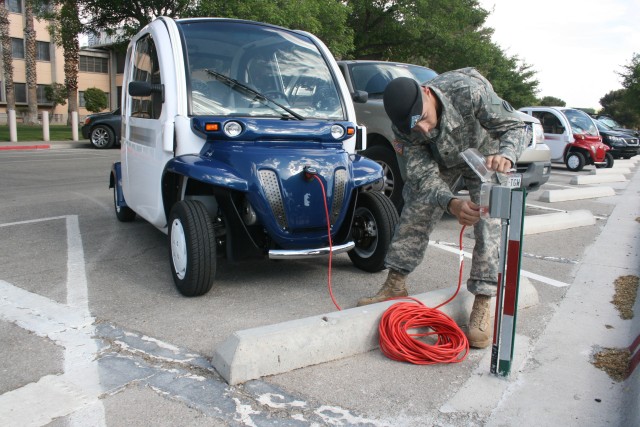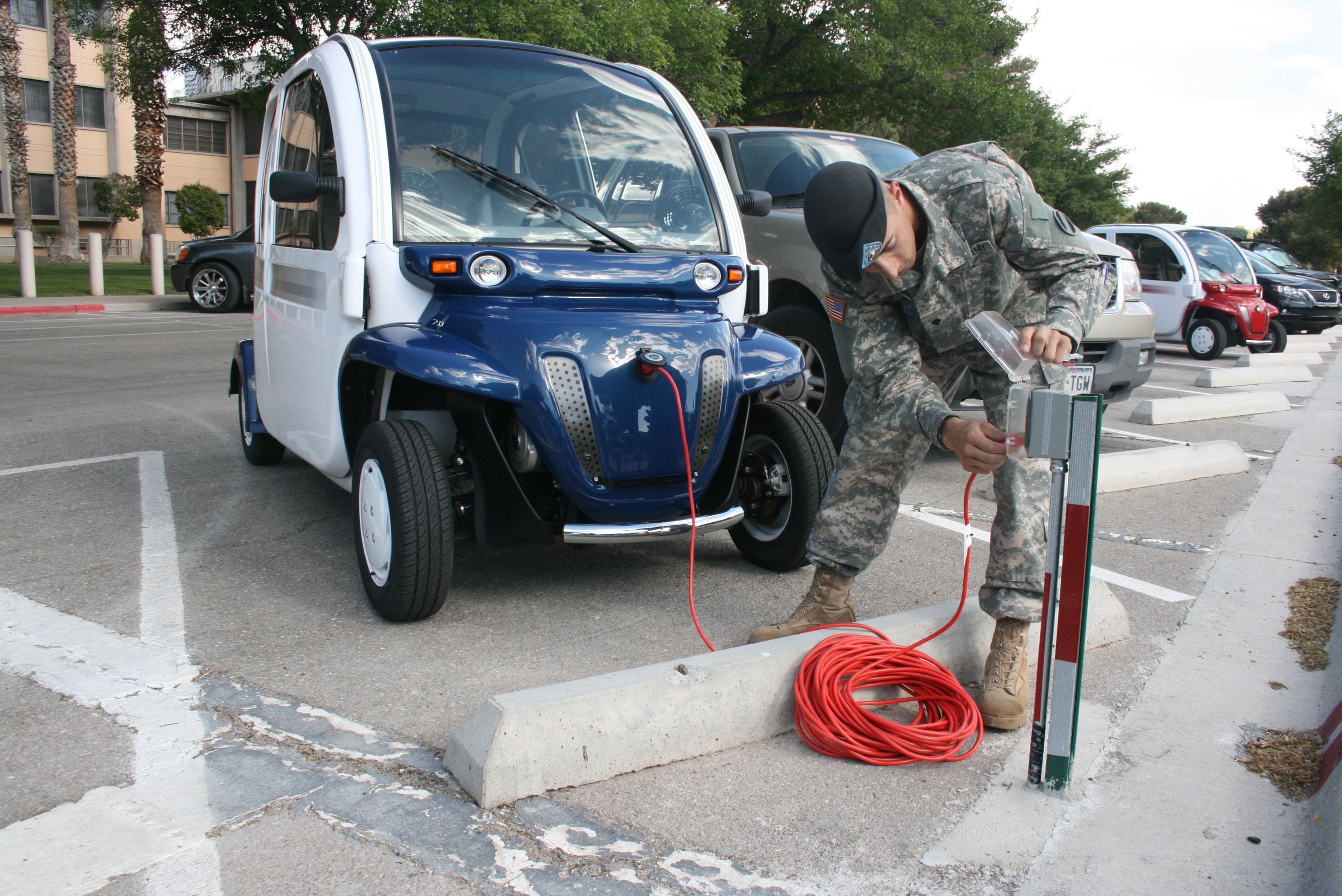
WASHINGTON (Army News Service, April 22, 2010) -- Fort Knox, Ky., has good dirt.
Using ground-source heat pumps, the installation staff has cut their natural gas requirement in half.
"They have wonderful dirt in Kentucky," said Kevin Geiss, director for the Army's energy security program.
Ground-source heat pumps are electrically-powered systems that tap into the earth's relatively constant temperature to provide heating, cooling and hot water for buildings, explained Geiss.
The base's soil is doubly efficient and also produces Devonian shale, a fine-grained sedimentary rock which turns out methane gas. Enough natural gas is harvested through the shale to last the summer months, Geiss said.
These efforts and many others follow the Army's goal of "Transforming the Army ... Sustaining the Environment." Outlined in an Earth Day message signed by the chief of staff of the Army, secretary of the Army, and the sergeant major of the Army, the Army's theme for Earth Day 2010 focuses on environmental stewardship.
"Earth Day provides the Army with the opportunity to reassert our commitment to environmental sustainability and energy security, critical to protecting the earth, protecting lives and supporting our mission requirements," reads the message.
Twenty-eight major Army installations have long-term sustainability plans, which include seeking alternative energy methods, ensuring safe disposal of radioactive waste and conservation.
And while Geiss recognizes that the Army's main purpose is national defense, he said considering the environment when conducting operations is a must.
"Without power and energy, the Army lies silent," said Geiss. "The tanks don't run, the helicopters don't fly. We can't even conduct our training mission here in the U.S. without the electricity supporting those missions and operations ... it really is a thread that runs through everything that we do."
But Geiss assured that the Army doesn't get an "environmental free pass."
"At the end of the day, what the nation is asking us to do is to protect it. That's what we're measured upon. As we do that, the question is, have we engaged in all the feasible measures to ensure sustainability'"
Tad Davis, the deputy assistant secretary of the Army for Environment, Safety and Occupational Health, agreed with Geiss and said the Army does its best to be a good steward of its 4 million acres of land.
"The importance of Earth Day to the Army is huge because it allows us to reaffirm our commitment to environmental stewardship, development and implementation of sustainable practices and energy security," Davis said. "We believe these efforts will reinforce the readiness of the Army and enhance our ability to accomplish the mission."
Davis said that considering the environment is an obligation when taking on any Army project.
"There's a tremendous amount of things that we've done that we can take great pride in, but there are also a lot of things we need to do so that we can preserve this planet for future generations of Americans to enjoy," Davis explained.
He also talked about the Department of Defense's goal of cutting greenhouse gas emissions down by 34 percent by 2020, an effort that parallels the Army's goal to narrow its "carbon boot print."
Similarly, the DoD tries to reduce the use of radioactive material by recycling items whenever possible.
Kelly Crooks, the chief of the radioactive waste operations division at Rock Island, Ill., said the Army safely disposes of a significant amount of low-level radioactive waste.
"There's hundreds of different items, if not thousands," Crooks said of the plethora of radioactive materials that can be found in everyday items such as battery-powered watches. "Every post, camp and station generates some radioactive waste."
The most commonly-disposed material by the Army is depleted uranium, which can be found in armor-penetrating ammunition, said Crooks.
Usually disposed of by burial, designated areas have engineered disposal waste trenches or containers to hold the waste.
"There are typically several layers of protection in any area," said Crooks.
Crooks explained that when burying an item, the contaminated element is usually buried solo to minimize space usage, while the non-contaminated container and additional parts are either recycled or destroyed separately.
For example, he said the Army works with the Department of Energy on recycling Tritium, a radioactive gas used for illumination. When the Army has excesses of the material, it often contacts the Department of Energy, which has a need of the item.
This inter-governmental recycling partnership contributes to the government's goal of reducing energy consumption, an objective which government agencies were awarded a total of $700 million in stimulus funds to achieve.
On Earth Day, Army installations throughout the U.S. will be participating in activities such as the "office supply swap," and 'carpool to work challenge' at Fort Meade, Md., and using electric cars such as at Fort Bliss, Texas.
"Each member of the Army community -- Soldiers, family members, civilians, and contractors -- must actively promote innovate thinking and action to take care of our planet," reiterates the Army's Earth Day message.

Social Sharing